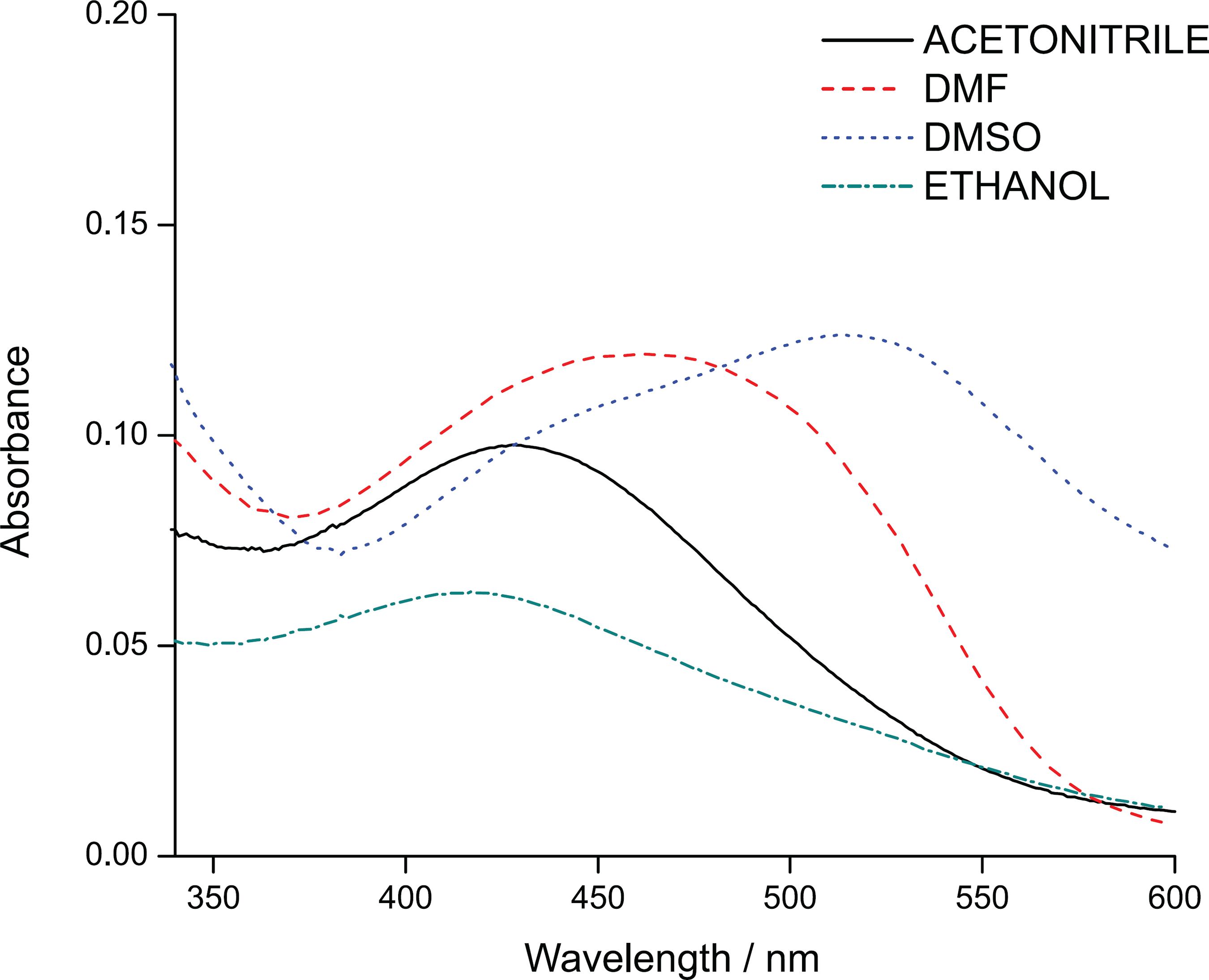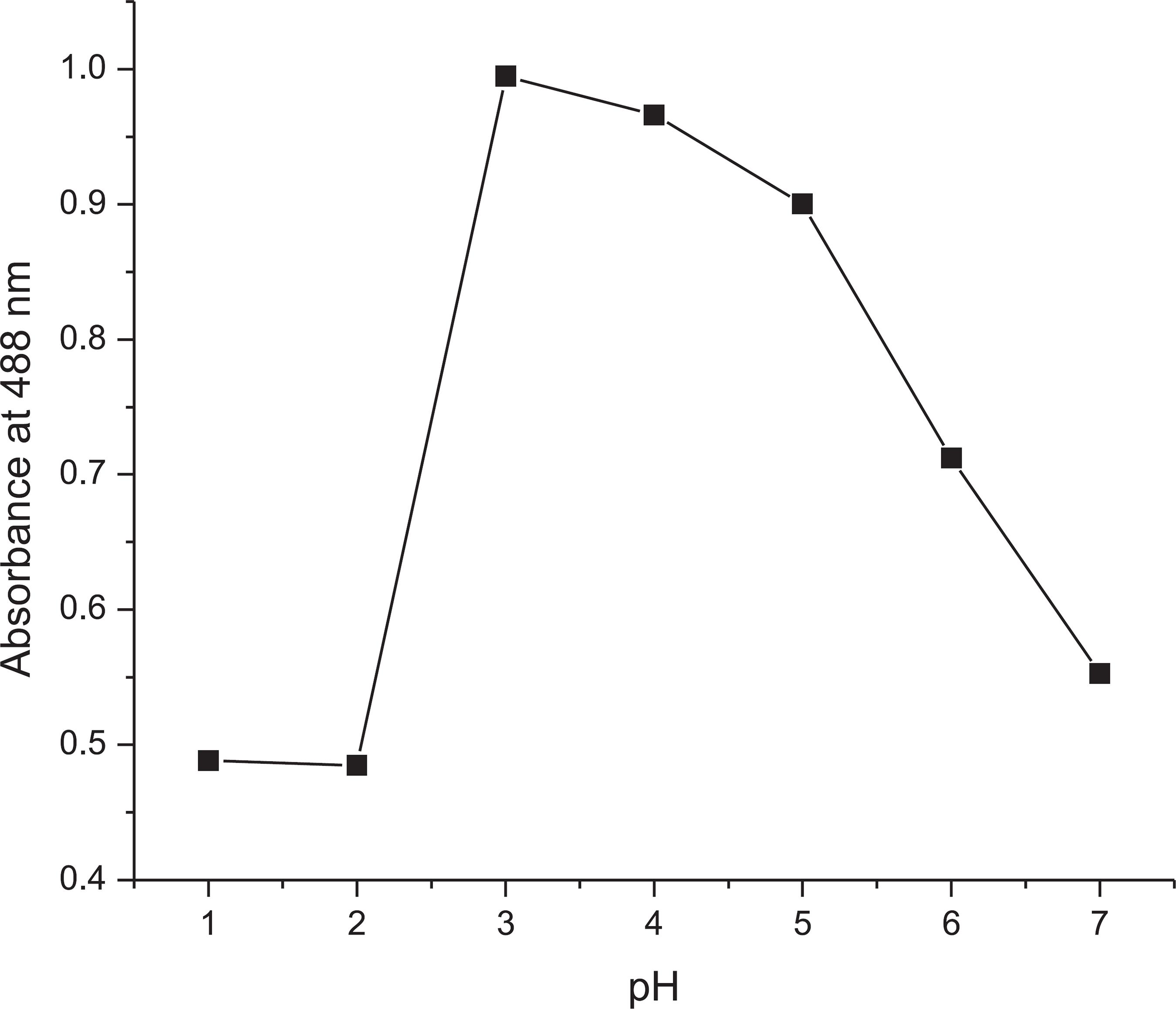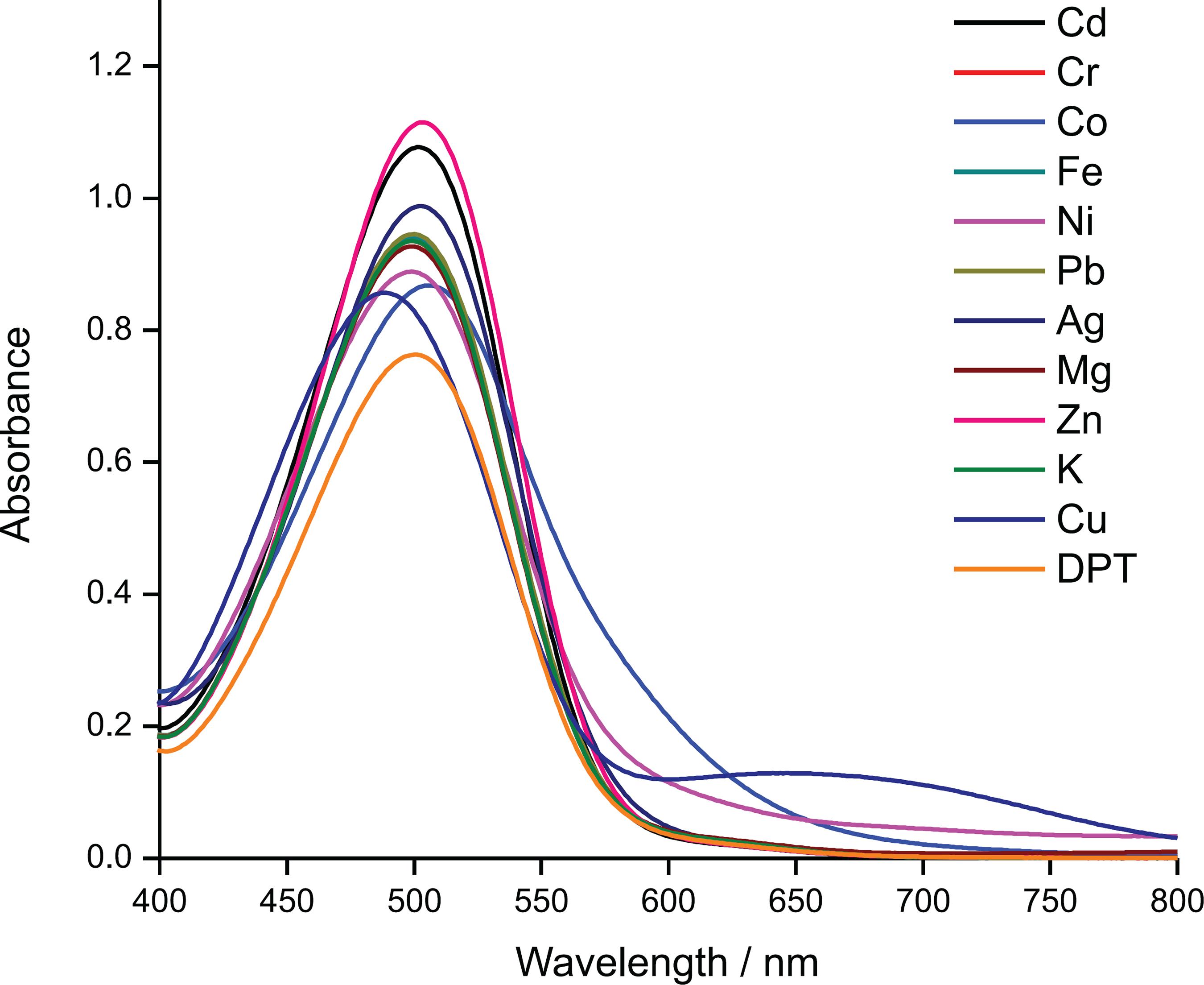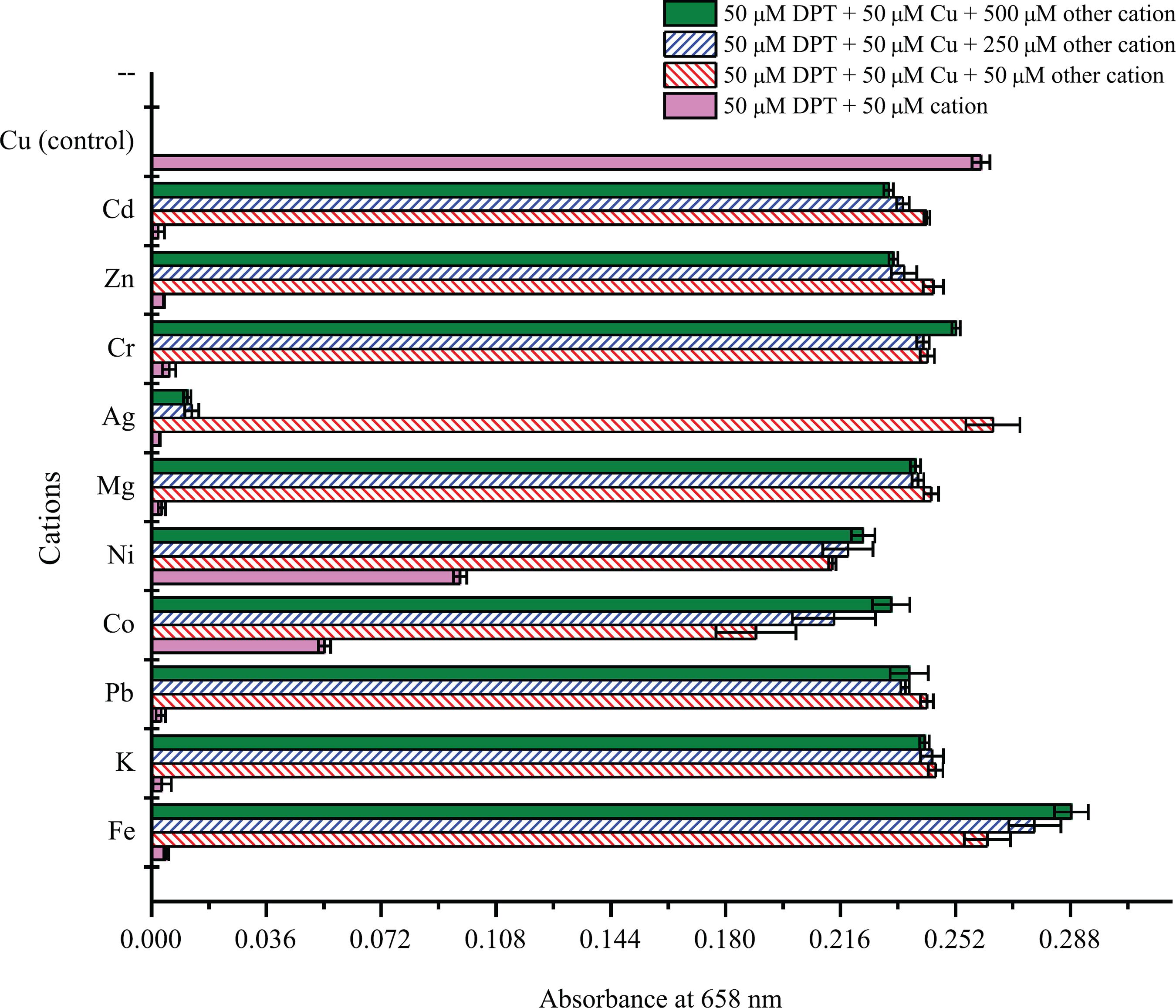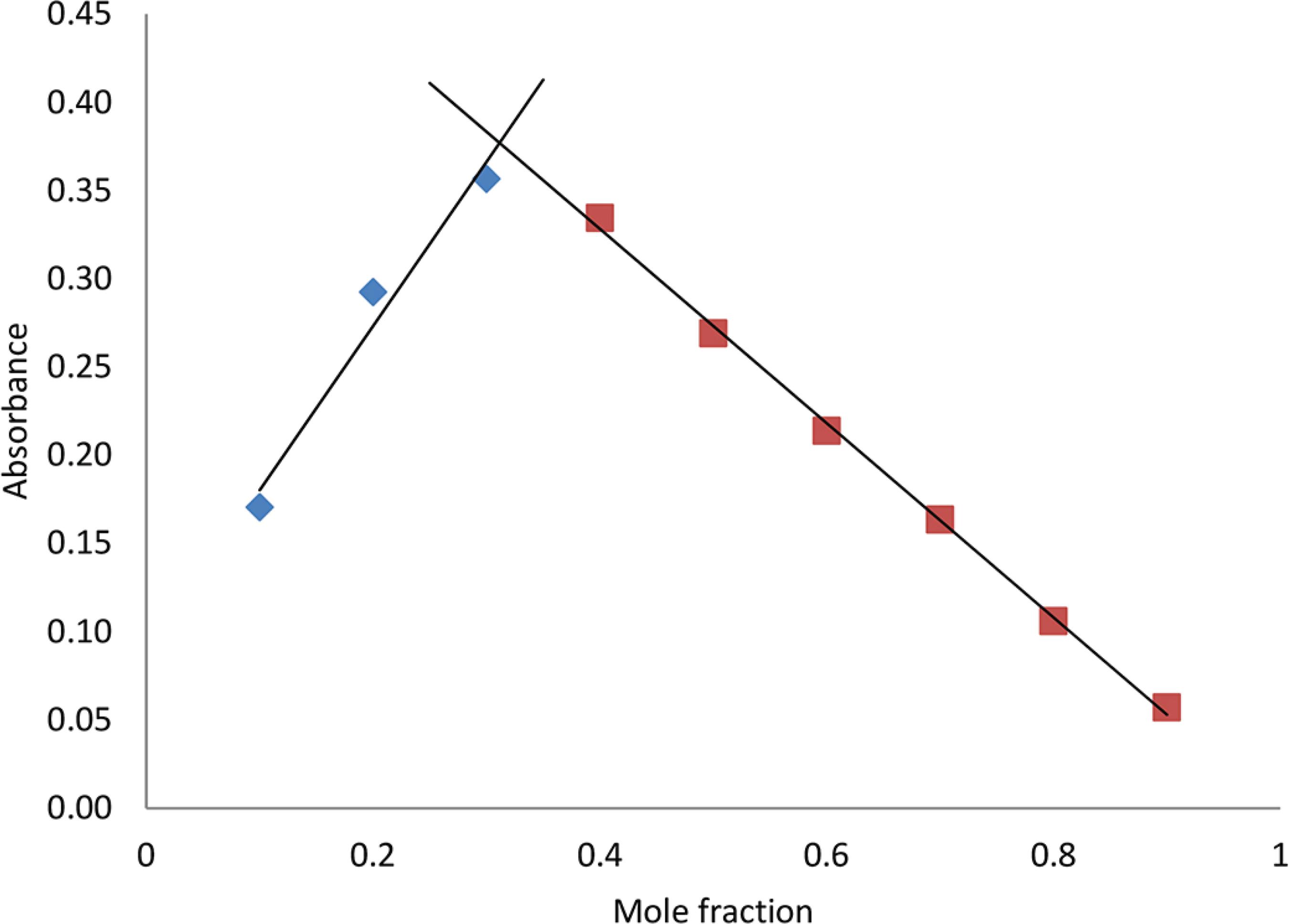The sensitive and selective chemosensor for copper(II) ions (Cu2+) was successfully optimized using the 1,5-diphenylthiocarbazone (DPT) compound. The result showed that dimethyl sulfoxide (DMSO) in a 9:1 (DMSO:water) ratio at a pH of 3 was the optimum medium for DPT to act as chemosensor of Cu2+ recognition. The DPT chemosensor did not encounter any interference from other metal ions, including Fe3+, Ag+, Cr3+, Pb2+, Mg2+, Cd2+, Zn2+, K+, Ni2+ and Co2+. The presence of Cu2+ led to an absorption peak at 658 nm, where the color changed from cantaloupe to gray-green color indicating the interaction by the formation of the DPT-Cu complex in 2:1 stoichiometry. The theoretical s-profile calculation using conductor-like screening model for real solvents (COSMO-RS) showed the compatibility of DPT with the DMSO solvent through hydrogen bonding. In the density functional theory (DFT) calculations, the formation energy of DPT and DPT-Cu were -1113.79645660 and -2435.71832681 a.u. , respectively. Under optimal conditions, a detection limit of 6.08 µM for the DPT chemosensor for Cu2+ recognition can compete with the flame atomic absorption spectroscopy (FAAS) value of 6.21 µM. Finally, DPT was able to provide less expensive, more portable and convenient chemosensor for Cu2+ recognition in environmental water samples.
Keywords:
chemosensor; colorimetric; COSMO-RS; DFT; test strip


